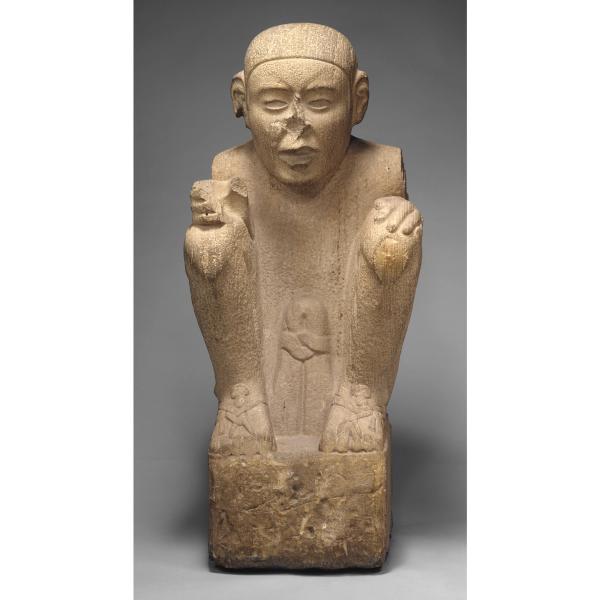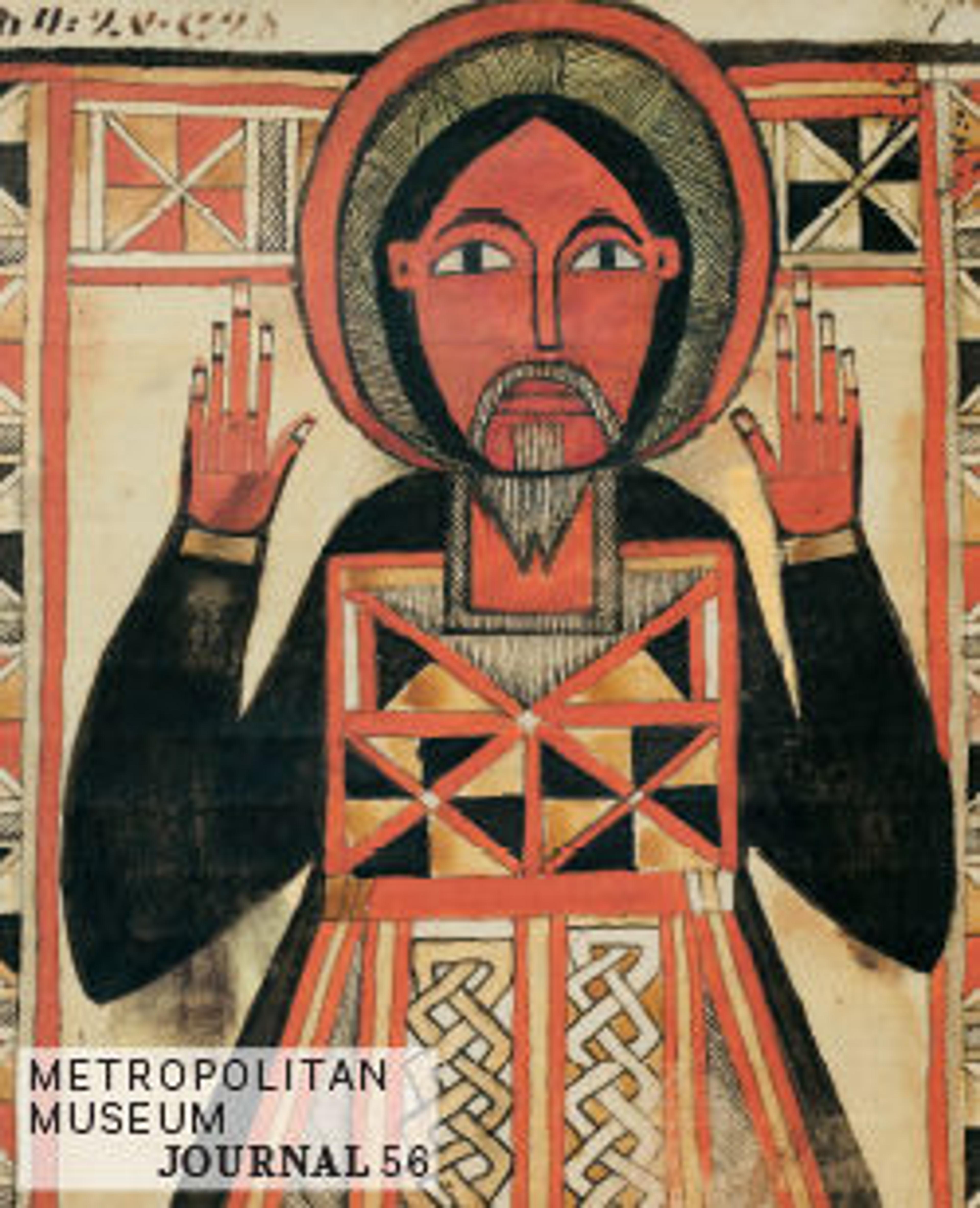Standard bearer
The sculpture comes from the town of Castillo de Teayo in northern Veracruz, where a temple pyramid and a number of sculptures were discovered in 1903. The sculptures are carved in a provincial version of the metropolitan Aztec style.
Artwork Details
- Title: Standard bearer
- Artist: Mexica or Veracruz artist(s)
- Date: 1200–1521 CE
- Geography: Mexico, Mesoamerica, Veracruz
- Culture: Mexica
- Medium: Sandstone
- Dimensions: H. 31 11/16 × W. 13 7/16 × D.13 1/16 in. (80.5 × 34.1 × 33.1 cm)
- Classification: Stone-Sculpture
- Credit Line: Harris Brisbane Dick Fund, 1962
- Object Number: 62.47
- Curatorial Department: The Michael C. Rockefeller Wing
Audio

1642. Standard bearer, Mexica or Veracruz artist(s)
Leonardo López Luján
JOSÉ MARÍA YAZPIK (NARRATOR): Archaeologist Leonardo López Luján.
LEONARDO LÓPEZ LUJÁN (English translation): This is one of the most spectacular Mesoamerican sculptures, notable for its extraordinary naturalism. Every detail of his body is perfectly rendered. He wears two beautiful sandals which indicate he’s a high-ranking official.
Mesoamerican farmers, particularly in the post-classic period, didn’t wear sandals. They would walk barefoot. Sandals were a privilege granted only to dignitaries.
The figure’s partially broken right hand is open. In it, he would have held a flagpole, and borne a standard – a symbolic banner or flag.
JOSÉ MARÍA YAZPIK: This sculpture likely held a flag belonging to its creators, the Mexica people, sometimes referred to as “Aztecs.” In fact, the term Aztec refers to the rulers and inhabitants of a mythical island called Aztlán. Leonardo López Luján recounts the Mexica origin story.
LEONARDO LÓPEZ LUJÁN (English translation): At some point, the Aztecs decided to abandon their rulers, and leave their island home. They were guided by their leader Huitzilopochtli, who took the form of a hummingbird or eagle. Huitzilopochtli said to them “Tiui tiui” which means “Let’s go” in Nahuatl, and together they began a long journey to the Basin of Mexico. On the way, the Aztecs decided to change their name. They would no longer share a name with their former rulers. They would become the Mexitin, Mexicas or just Mexicans.
When the Mexica arrived at the promised land, on the shores of the lakes in the Basin of Mexico, they settled in two cities. They established the city of Mexico-Tenochtitlan around 1325, and the city of Mexico-Tlatelolco a few years later.
JOSÉ MARÍA YAZPIK: This figure of a standard bearer has rounded limbs and facial features that are illustrative of the Imperial Mexica style, which originated in those highland cities. However, this particular sculpture comes from distant Veracruz, on the gulf coast - a testament to the power and reach of the Mexica empire.
More Artwork
Research Resources
The Met provides unparalleled resources for research and welcomes an international community of students and scholars. The Met's Open Access API is where creators and researchers can connect to the The Met collection. Open Access data and public domain images are available for unrestricted commercial and noncommercial use without permission or fee.
To request images under copyright and other restrictions, please use this Image Request form.
Feedback
We continue to research and examine historical and cultural context for objects in The Met collection. If you have comments or questions about this object record, please contact us using the form below. The Museum looks forward to receiving your comments.
